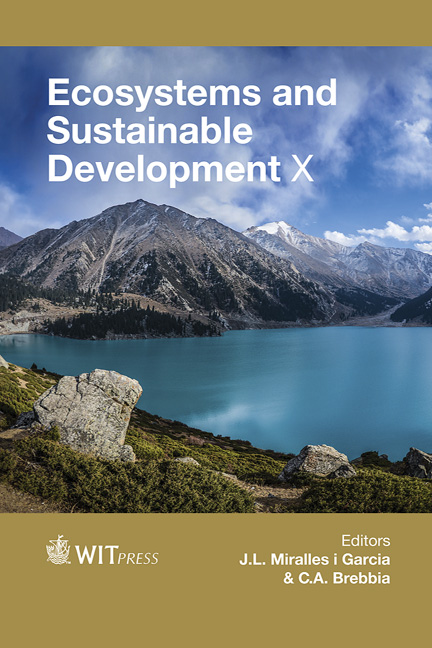Developing And Identifying Sustainability Indicators In The Singapore Context
Price
Free (open access)
Transaction
Volume
192
Pages
11
Page Range
381 - 391
Published
2015
Size
598 kb
Paper DOI
10.2495/ECO150341
Copyright
WIT Press
Author(s)
H. H. Khoo, A. W. L. Ee, Y. Wang, A. Adhitya, Y. S. Low, E. X. Y. Lim, C. K. Lee, R. B. H. Tan
Abstract
Singapore’s geographical setting, being a highly industrialized city-state, with limited natural resources have placed it in a unique position to deal with key issues in its commitment to sustainable development. Evolving sustainability science and assessment tools that underpin sustainability efforts are instrumental in guiding decisions and policies in the drive towards achieving sustainable development. Practical sustainability methods or indicators are viewed as imperative to determine the successful implementation and outcome of sustainable strategies and policies.
We propose the preliminary development of sustainability indicators for four main important subjects for Singapore: i) carbon footprint; ii) energy; iii) water; and iv) waste management and landfill. For carbon footprint, a preliminary model was introduced to estimate the greenhouse gas (e.g. CO2) emissions considering the manufacture of resources to (value-added) products. Limitations and potential performances of “clean energy” will be discussed, as well as, water supply and demand. In the fourth indicator development, the limited land area of Singapore (718.3 km2) and its total dependence on an offshore landfill for the disposal of MSW (municipal solid wastes) is investigated.
Keywords
sustainable indicators, carbon footprint, energy, water, landfill





